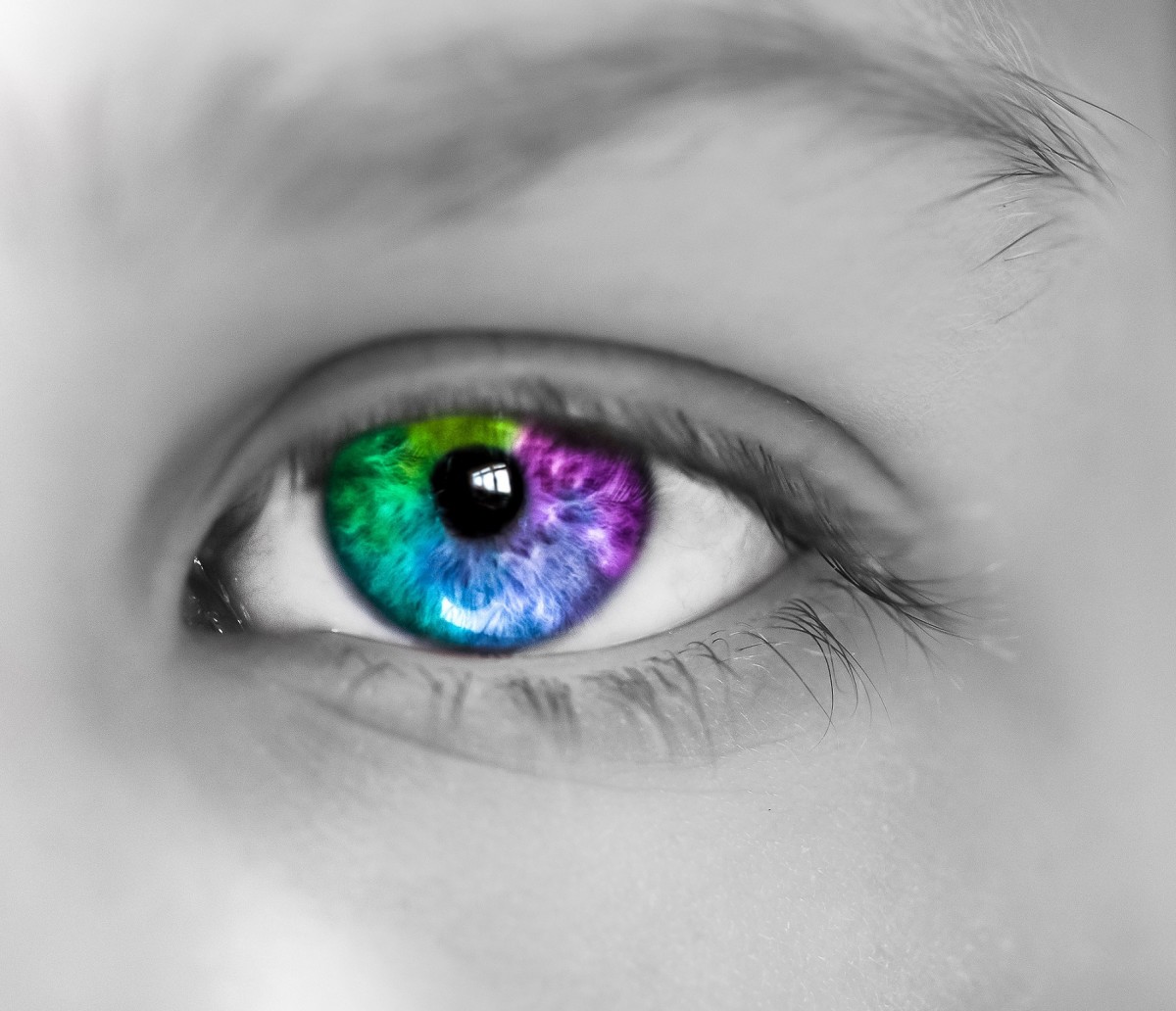Have you ever stood before a breathtaking sunset, its fiery hues painting the sky in a symphony of orange, pink, and purple? Or perhaps you’ve marveled at the delicate shade of blue in a butterfly’s wing, or the deep, rich green of a lush forest? These moments, filled with vibrant colors, are a testament to the incredible ability of our eyes to perceive and interpret the world around us. But how many colors can our eyes truly see?

Image: www.bigstockphoto.com
This question, seemingly straightforward, delves into a fascinating interplay of physics, biology, and perception. It’s not just about counting hues on a color chart but understanding how our eyes capture light and our brains interpret it.
The Science Behind Sight: From Light Waves to Brain Signals
The human eye, a masterpiece of evolution, allows us to experience the world in a kaleidoscope of colors. It all starts with light – electromagnetic radiation that travels in waves. Each color we see is defined by the wavelength of this light; for example, the shorter wavelengths correspond to blues and violets, while longer wavelengths are associated with reds and oranges.
The journey begins when light enters the eye through the cornea and the pupil, passing through the lens, which focuses it onto the retina. This light-sensitive layer at the back of the eye contains two types of photoreceptor cells: rods and cones. Rods are primarily responsible for our vision in low light, enabling us to see shades of gray. Cones, on the other hand, are responsible for color vision. We have three types of cones, each sensitive to a specific range of wavelengths:
- Short-wavelength cones (S cones): Sensitive to blue and violet light
- Medium-wavelength cones (M cones): Sensitive to green light
- Long-wavelength cones (L cones): Sensitive to red and yellow light
When light hits these cones, it triggers a chemical reaction, generating electrical signals. These signals are then transmitted to the brain via the optic nerve, where they are interpreted and processed, resulting in our perception of color.
Beyond the Cone Count: A Deeper Dive into Color Perception
While our three types of cones can sense different wavelengths, they can’t detect every single one. This means our perception of color relies on the brain combining signals from these cones. For instance, when both M and L cones are stimulated, the brain interprets it as yellow, even though there’s no dedicated cone type specifically for yellow light.
This intricate process allows us to perceive a wide range of colors, but how many? The number is much more nuanced than a simple count.
The Many Colors We See: A Spectrum of Possibilities
There’s no single definitive answer to the question of how many colors the human eye can see. Here’s why:
- The Human Eye’s Limits: While we can see a vast spectrum, scientific estimates suggest that the average person can discern around 1 million distinct colors. This number can vary based on individual factors, such as age, genetics, and exposure to different colors.
- Spectral Sensitivity and Color Mixing: Our cones have varying degrees of sensitivity within their respective wavelengths. This means we are better at differentiating certain colors than others. For example, we are more sensitive to differences in shades of green compared to shades of red.
- Brain Interpretation: Ultimately, our perception of color is subjective. The brain processes signals from the cones and influences our interpretation of color based on factors such as context, memory, and personal experiences.
This means that even if two individuals have identical cone sensitivity, they might perceive the same color slightly differently due to these subjective factors.

Image: delilahmarty.blogspot.com
Colorblindness: An Altered Spectrum of Sight
Colorblindness, affecting approximately 1 in 12 men and 1 in 200 women, demonstrates how our color perception can vary. In colorblindness, individuals lack or have a deficiency in one or more types of cones, leading to impaired color vision. Common types include red-green colorblindness, where individuals struggle to distinguish between red and green hues.
The Evolving World of Color
Our understanding of color perception continues to evolve. Studies are exploring how our environment influences color vision, how we perceive color across different cultures, and how technology can be used to enhance color perception for individuals with colorblindness.
Unlocking the Wonders of Color: Actionable Tips for Enhanced Sight
While we can’t change our cone count, there are ways to enhance our color perception and appreciate the beauty of the world around us:
- Embrace Nature: Spend time outdoors, surrounded by natural light and the vibrant colors of the plant and animal world.
- Expand Your Artistic Palette: Engage in activities like painting, drawing, or photography, which can help you develop a deeper understanding and appreciation of colors.
- Explore Color Theory: Learn about the science of color, including color mixing, complementary colors, and the impact of color on mood and emotions.
By embracing these simple steps, you can become more attuned to the kaleidoscope of colors that surrounds you, enriching your visual experiences and broadening your understanding of the wonder of human sight.
How Many Colors Can The Human Eye See
Conclusion: A World of Color, Limitless in Its Beauty
While we may not be able to see every color imaginable, the human eye’s ability to perceive a vast spectrum remains a testament to the ingenuity of nature. From the intricate workings of the cone cells to the complex processing within our brains, color perception is a captivating journey that enriches our world. So, the next time you gaze upon a vibrant sunset or marvel at the colors of a flower, remember that each hue is a unique testament to the incredible power of our sight.






